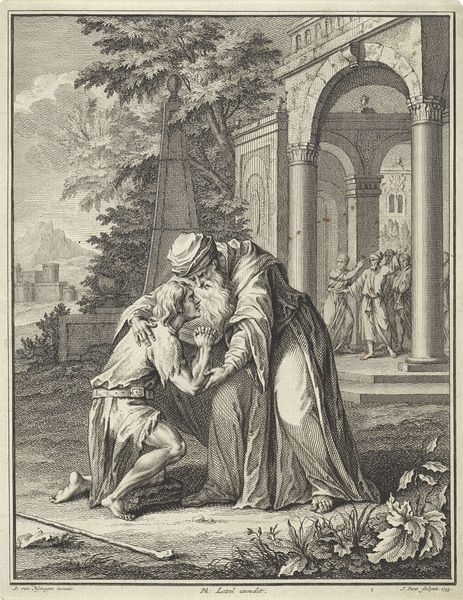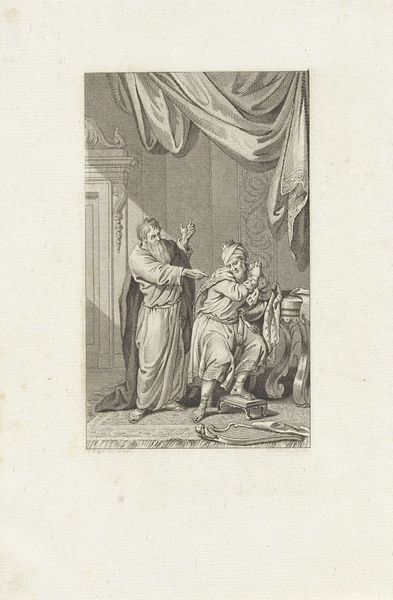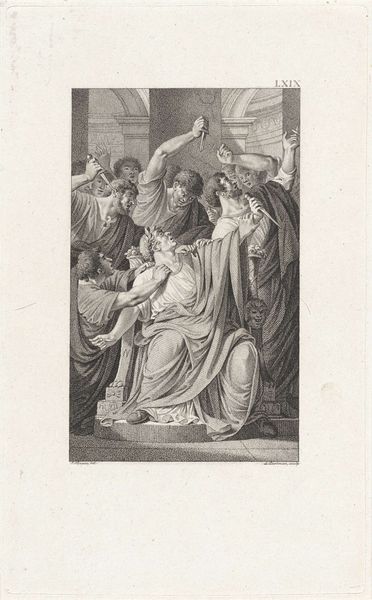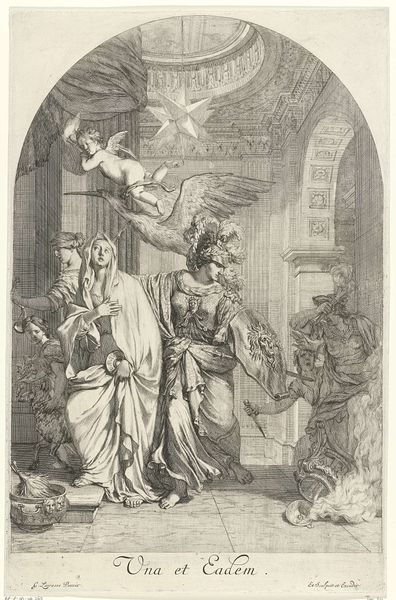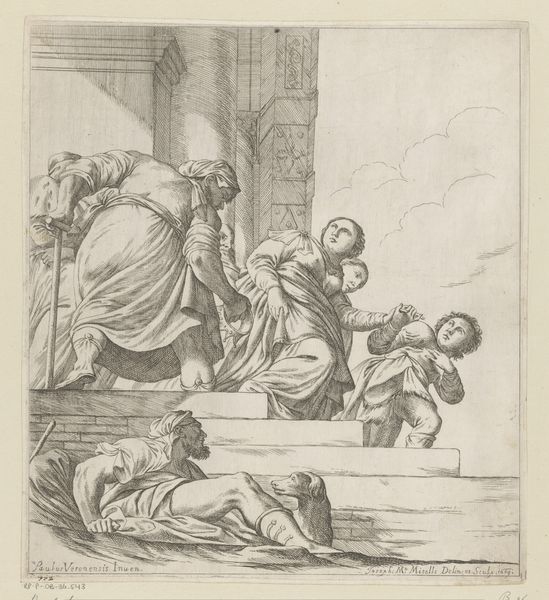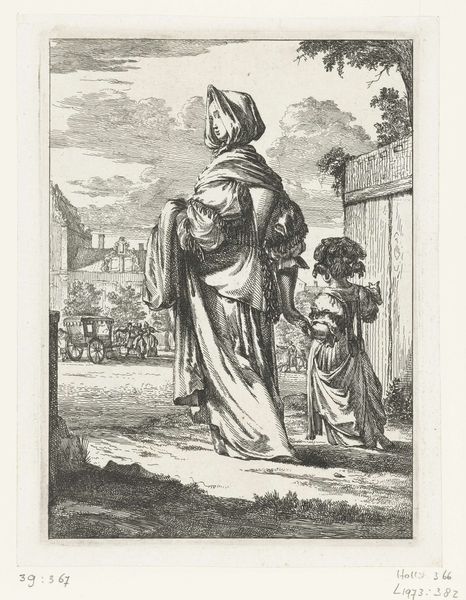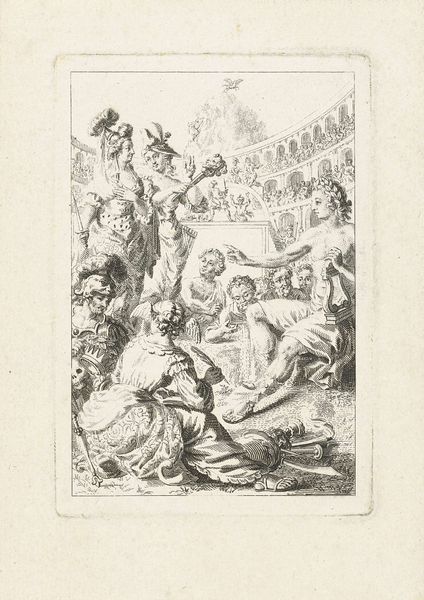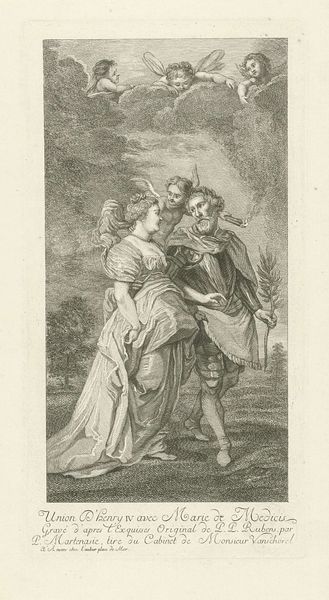
engraving
#
portrait
#
neoclacissism
#
old engraving style
#
classical-realism
#
figuration
#
old-timey
#
line
#
history-painting
#
academic-art
#
engraving
Dimensions: height 210 mm, width 131 mm
Copyright: Rijks Museum: Open Domain
Curator: Ludwig Gottlieb Portman's 1801 engraving, "Oppius gered door zijn zoon," housed right here at the Rijksmuseum. It's a fascinating example of neoclassicism. Editor: My goodness, look at the sheer muscularity of that hero, contrasted with the vulnerable, almost limp figure he carries! It feels like such an old-timey depiction of heroism, doesn't it? Like a story ripped straight from antiquity. Curator: Indeed. The print depicts a scene from Roman history, emphasizing piety and filial duty, themes very popular during the Neoclassical era. Think about the political landscape: revolutionary ideas challenging traditional power structures, artists looked back to the perceived order and moral clarity of the classical world. Editor: Ah, so it's less about a specific historical event and more about pushing a certain ideal? I get a real sense of... stoicism from this. All clean lines and clear purpose, almost no emotion on the rescuer’s face even as he labors! It’s quite chilling in a way. Is that intentional? Curator: Definitely! It speaks to the Neoclassical desire to portray virtue, strength, and a commitment to civic duty, emotions that resonate even if communicated without an excess of visible feeling. Oppius' son saving him highlights the importance of family and traditional roles. Editor: It is striking how those stark contrasts add drama and depth to the overall composition. There’s that crowd watching in the background, too, just close enough to the action but not involved. Are they meant to serve as witness or judgment to the scene? It feels as though they are weighing what is right! Curator: Good point! That crowd might represent public opinion, bearing witness to this act of heroic virtue and affirming those traditional societal values during a period of significant social transformation in Europe. Portman created this piece during the Batavian Republic era, right before the Napoleonic takeover of the Netherlands. Editor: Right, makes you wonder what political statement this historical tableau might really be about, doesn’t it? Beyond filial love. Well, that really adds layers. I initially saw just muscular arms and drapery but now it echoes with history and intrigue! Curator: Absolutely! Portman used classical realism not just as aesthetic choice but also to embed within it complex social and political commentaries. It reveals so much! Editor: Thanks, that certainly helps. Now when I look at it, I see beyond just the old engraving style! It makes you wonder about those untold stories that echo across art history.
Comments
No comments
Be the first to comment and join the conversation on the ultimate creative platform.


